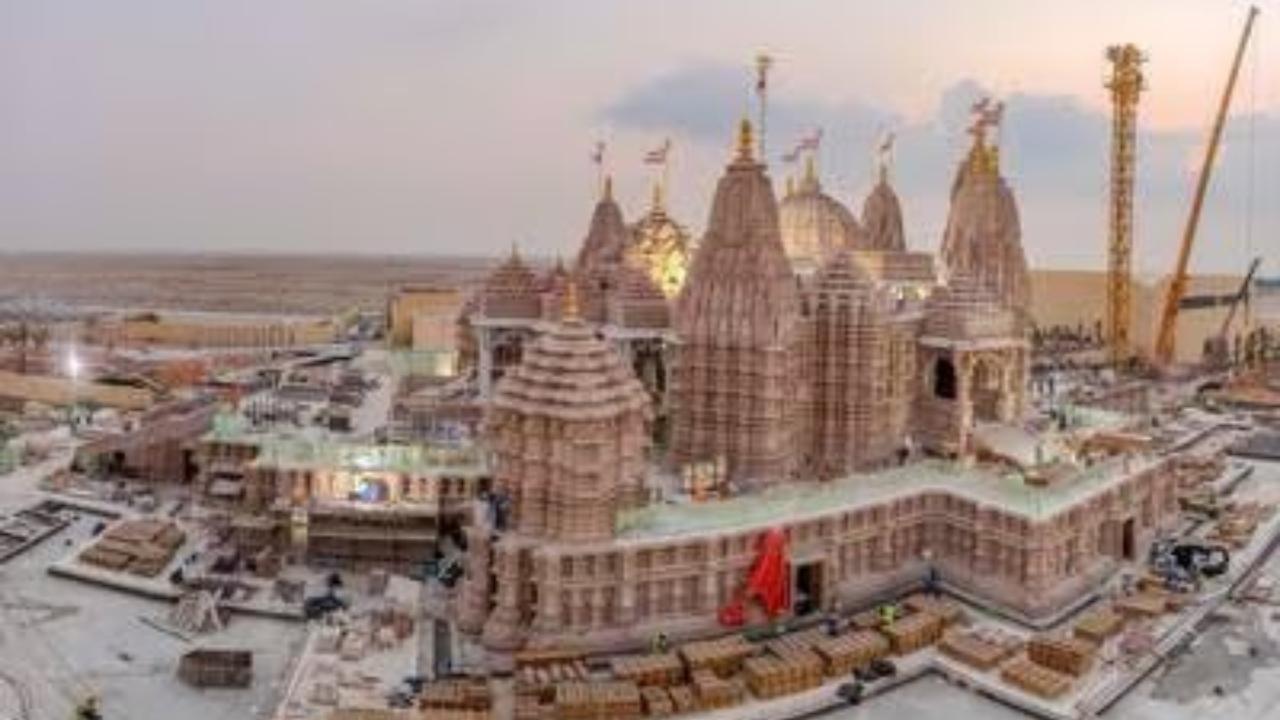PM Modi is to inaugurate the first Hindu temple in Abu Dhabi on February 14. The temple marks an significance for not only being the first traditional hand-carved stone Hindu temple in the Middle East but the biggest Hindu temple in West Asia

BAPS Hindu temple in Abu Dhabi. Pic/ X @BAPS
Prime Minister Narendra Modi is to inaugurate the first Hindu temple in Abu Dhabi on February 14. The temple marks an significance for not only being the first traditional hand-carved stone Hindu temple in the Middle East but the biggest Hindu temple in West Asia.
ADVERTISEMENT
Announcing the inauguration date of the temple, United Arab Emirates' (UAE) envoy to India Abdulnasser Alshaali called it a “monumental day” to “celebrate tolerance and and acceptance,” stressing that the initiative would further strengthen India-UAE ties.
Ahead of the grand inauguration ceremony, let's know the key highlights of the temple, which is built by the BAPS Swaminarayan Sanstha.
In August 2015, Sheikh Mohammed bin Zayed Al Nahyan, the Crown Prince of Abu Dhabi and Deputy Supreme Commander of the UAE Armed Force, gifted enormous land for the Hindu temple. On February 10, 2018, a memorandum of understanding was signed by India and the UAE in the presence of the entire royal family and over 250 local leaders. A day after the memorandum of understanding was signed, first stone consecration prayer for the mandir took place.
As part of its tolerance programme, the UAE government later granted another 14 acres of land for the temple. The foundation stone for the temple was laid on April 20 the same year in an event that was attended by thousands of Indians in UAE.
Architectural marvel
The construction of the temple started in December 2019, for which tonnes of pink sandstones and marbles were sent from northern Rajasthan to Abu Dhabi. Crafted by skilled artisans in India and assembled in the UAE, the temple's intricate design follows the ancient Shilpashastras, Sanskrit scriptures of architecture. Over 2,000 artisans from Rajasthan and Gujarat were employed to carve 402 white marble pillars for the temple. The pillars have also been embellished with sculptures of animals, birds, musicians and the Moon.
The temple complex is built to be a fully function location for social and cultural gatherings, which will have visitor centre, prayer halls, exhibitions, learning areas, sports area for children, thematic gardens, water features, a food court, a books and gift shop.
The temple around 108 feet tall, set on around 27 acres of land and is built at the estimated cost of Rs 700 crore. The temple can accommodate 8,000-10,000 people and is open to people of all faiths.
 Subscribe today by clicking the link and stay updated with the latest news!" Click here!
Subscribe today by clicking the link and stay updated with the latest news!" Click here!







